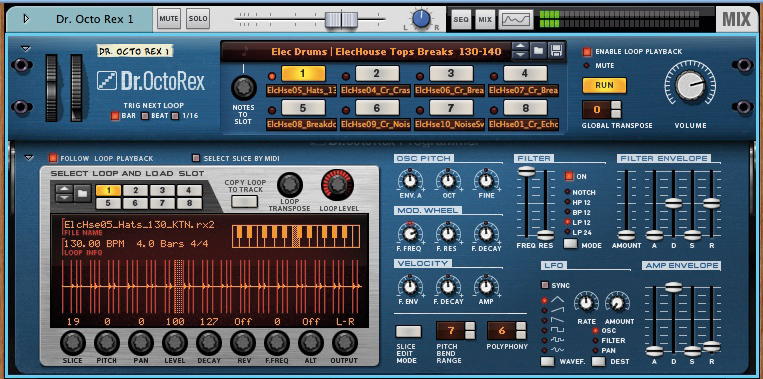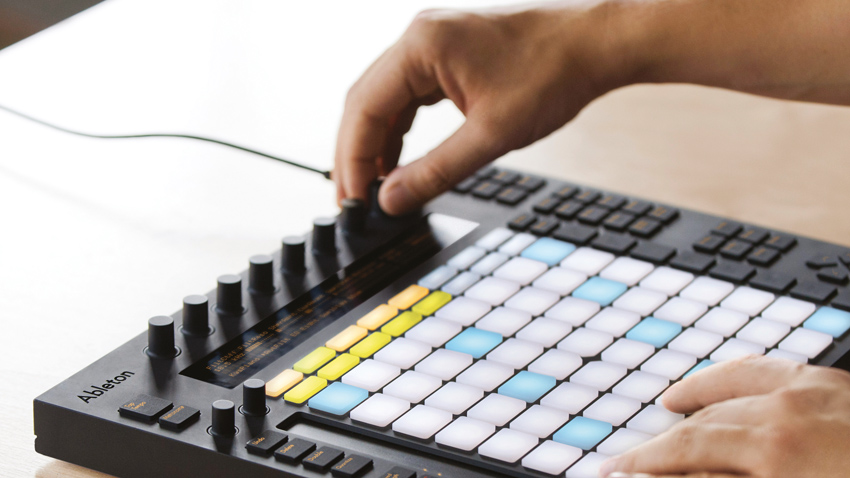The A to Z of computer music: Q-R
You get two letters for the price of one in the latest instalment of our jargon buster

Become a qualified computer music quizmaster by raiding our knowledge repository for the required reading.
Quantise
When you want to get your recorded MIDI (or sliced audio) parts perfectly in time, Quantise is the function to reach for. When you apply quantisation to a MIDI part, any notes within it that aren't perfectly aligned to a specified time-based grid (eight-notes, 16th-note triplets, etc) are 'snapped' to it.
Quantise is obviously just the thing, then, for fixing badly performed recordings, but it's also effective at straightening out overly 'loose' (but not actually 'bad') parts to work them into rigidly timed electronic tracks. Many DAWs also feature iterative quantise, whereby notes are moved towards the grid lines by a user-set amount or percentage, with 100% being full alignment.
Quarter-note
American terminology for the English crotchet, being a note one quarter the duration of a semibreve (whole note), which in turn is equivalent in duration to one bar in 4/4 time.
Quaver
English terminology for the American eighth-note, a note one eighth the duration of a semibreve (whole note), which in turn is equivalent to four quarter-note beats - one bar in 4/4 time.

Quavers and quarter-notes shown on the traditional stave and in a piano roll.
QWERTY keyboard
As opposed to a MIDI/piano keyboard, the QWERTY keyboard is the one you use to interact with your computer, phone or tablet, entering alphanumeric data and other symbols, controlling cursor movement and 'selection', and so on. In many DAWs (and some software instruments), it can also be pressed into service as a makeshift MIDI keyboard. It's named after the first six letters of the top row of letter keys.
Want all the hottest music and gear news, reviews, deals, features and more, direct to your inbox? Sign up here.
RAM
Random Access Memory. A form of computer data storage designed for very high and roughly consistent read/write access speed no matter what order the data stored is read/written in. While your computer's hard disk stores your apps and documents, its RAM is where all that data is sent to be handled by the OS (which is also loaded from your hard disk into RAM!).
RAM is much faster than disk-based storage - it needs to be to keep up with the CPU and other speedy components that come together to create a computer. While the RAM in your Mac or PC is volatile (when the system is powered down, its contents are lost), non-volatile RAM also exists, like the ROM (Read-Only Memory) in old hardware synths and sound modules, and the NVRAM in USB flash drives.
Reference track
When mixing or mastering a track, it can be immensely helpful to compare your ongoing results to a finished 'reference' track in the same style. The goal isn't necessarily to copy the sound of the reference track but rather to match its dynamic feel, energy, frequency spectrum, etc.
Even the most experienced of producers and engineers will use reference tracks, so don't think of them as 'stabilisers' for novices learning how to mix - they're part and parcel of the established production process.
Release
The release stage of an envelope, when triggered, determines the amount of time it takes for the signal's processing to drop from the sustain level to zero. The release stage could be triggered via the literal releasing of a key on a keyboard when the envelope is on a synth or sampler (fading the sound down to silence), or an audio signal dropping below the threshold parameter when it's part of a compressor ('withdrawing' the compression), for example.
Remix
Originally meaning to simply take a master multitrack tape recording that's already been mixed and mix it again to correct or improve it, remixing today refers to the process of taking a track and remaking it entirely, while retaining some or all of its key elements in order to keep it recognisable as the same core piece. This might be done for purely artistic reasons or in order to increase the market for a particular release - making a chart-friendly remix of an underground hip-hop number, for example.
Render
Closely related to resampling to the point of being essentially the same thing much of the time, to render means to capture an entire signal chain (be that a single part, or the output of a single, group or master mixer channel) in a single audio file. When you freeze a track to free your CPU from the plugins running on it, or bounce down a finished mix to a stereo master, you're rendering it.
Resample
Whenever you change a piece of digital audio in any way (effects processing or timestretching, say) and render or bounce it down as a new piece of digital audio, we call this resampling. Resampling can be done for creative purposes or just to claim back valuable CPU cycles. Once a part or track is resampled, plugins used on it can (and indeed, should) be disabled.
Resolution
In the same way that the resolution of a graphical display determines the level of sharpness and detail with which images are represented on it, the resolution of an audio signal determines the effective dynamic range (according to the number of discrete volume levels - ie, bit depth) and upper range of frequencies (sample rate) it's able to represent.
The industry standard for mastered music delivery is 16-bit/44.1kHz, but at the production stage, higher resolutions (particularly in bit depth) are used in order to optimise quality.
Resonance
Also known as 'emphasis', 'Q' or 'Q factor', the resonance parameter on a filter controls the width of a band of boosted frequencies immediately adjacent to the cutoff frequency. Its purpose is to add bite and aggression to filtered sounds, and very effective it is, too!
Reverb
Reverberation, or reverb, is the reflection of soundwaves off the surfaces of an environment. In music production, the simulation of reverb is a cornerstone effect, used to give instruments and sounds spatial context, ambience and 'air'.
There are two types of reverb plugin: algorithmic, which applies mathematical signal processing to the signal to place it in a wholly 'conjured' space; and convolution, which imposes samples of real-world spaces and equipment (impulse responses) on the signal for impressive realism. However, reverb isn't all about rooms, halls and arenas - some plugins are designed specifically to generate utterly unreal, 'sci-fi' effects.
REX file
An audio file format generated only by Propellerhead's ReCycle and Reason applications. Primarily intended to be looped, the audio clip within a REX file is sliced, and the DAW playing it back can move the slices closer to or further away from each other in order to 'timestretch' the loop while still maintaining the original sound of each component of it. Some DAWs can also trigger the slices via MIDI for on-the-fly rearranging of loops via a MIDI keyboard.

Propellerhead's Dr. Octo Rex rack unit can arrange, manipulate and play back multiple REX loop files.
Ring modulation
A processing technique in which two waveforms are multiplied together, outputting the sum and difference of the signals' frequencies. All you really need to know is that ring modulation produces brash, metallic sounds, and that you'll find it in quite a few synth and effects plugins.
RMS
Root Mean Square. A calculation used in metering to define the average level of a signal over a short period of time (a few hundred milliseconds by default in most systems), as opposed to peak, which defines the highest level of a signal over time.
The RMS level gives a good indication of the average loudness and dynamic range of a signal, although it's not as accurate as peak metering for the detection of 'overs' and clipping.
Roll-off
The roll-off of a filter is the 'steepness' of its attenuation slope beyond the cutoff frequency, expressed in decibels per octave. A 24dB/octave low-pass filter, for example, reduces the amplitude of frequencies within a signal at a linear rate of 24dB for every octave they rise above the cutoff - a steep roll-off, resulting in much 'sharper' filtering than a 6dB, 12dB or 18dB/octave model.
Root note
'Root note' has two definitions in music production. The first is the note within a chord that gives it its name - the note G in a G major chord, for example. The second is in sampling: when a single sample is mapped across multiple notes in a sampler (the note G mapped to F, F#, G, G# and A, say), the note on which it plays back in its natural, un-timestretched form (that central G) is the root note.
Rotary encoder
A knob on a hardware controller that rotates endlessly with no start and end point and is mapped via the software to which it's connected. The rotary encoders on Ableton's Push controller/instrument, for example, switch between adjusting volume, pan, plugin parameters, effects sends, etc, as determined by the currently selected 'layer' within the software.

Get tactile with your controller's rotary encoders.
Royalty-free
A royalty-free work is any piece of audio, video or media of any other kind that can be used by anyone within a project of their own as they see fit, without any payment of any kind to the originator or their agents. The only thing you can't do with royalty-free material is resell it. The samples you can download from our own SampleRadar are royalty-free, so you can commercially release tunes made using them.
Computer Music magazine is the world’s best selling publication dedicated solely to making great music with your Mac or PC computer. Each issue it brings its lucky readers the best in cutting-edge tutorials, need-to-know, expert software reviews and even all the tools you actually need to make great music today, courtesy of our legendary CM Plugin Suite.
